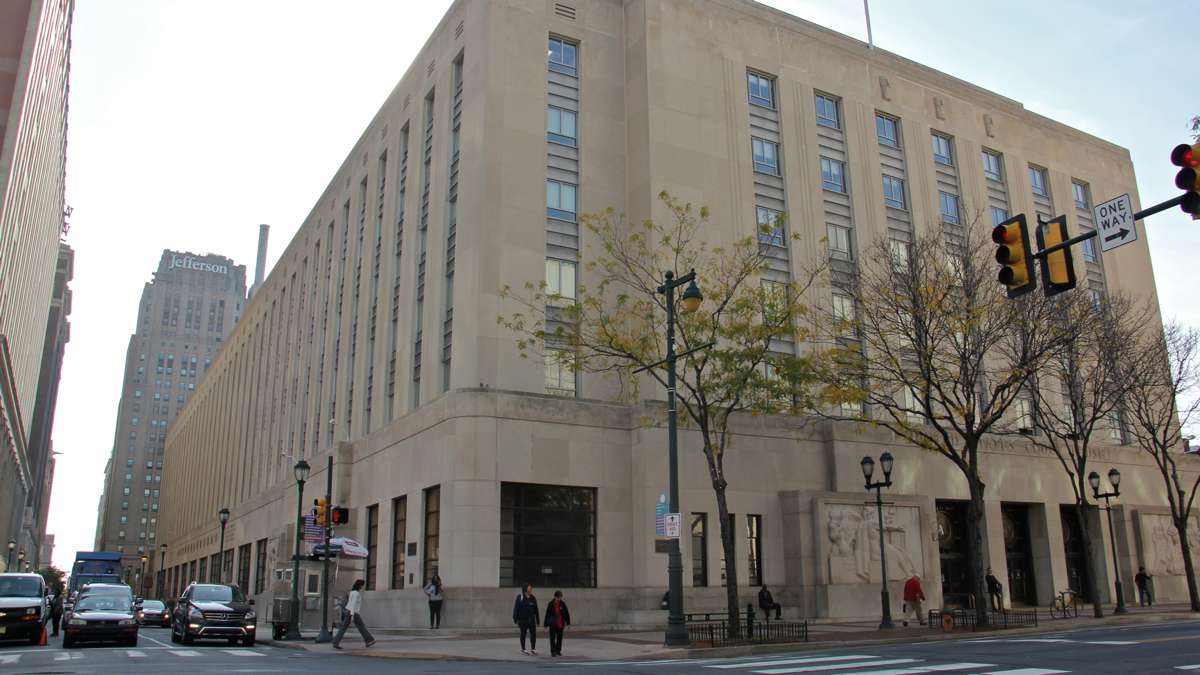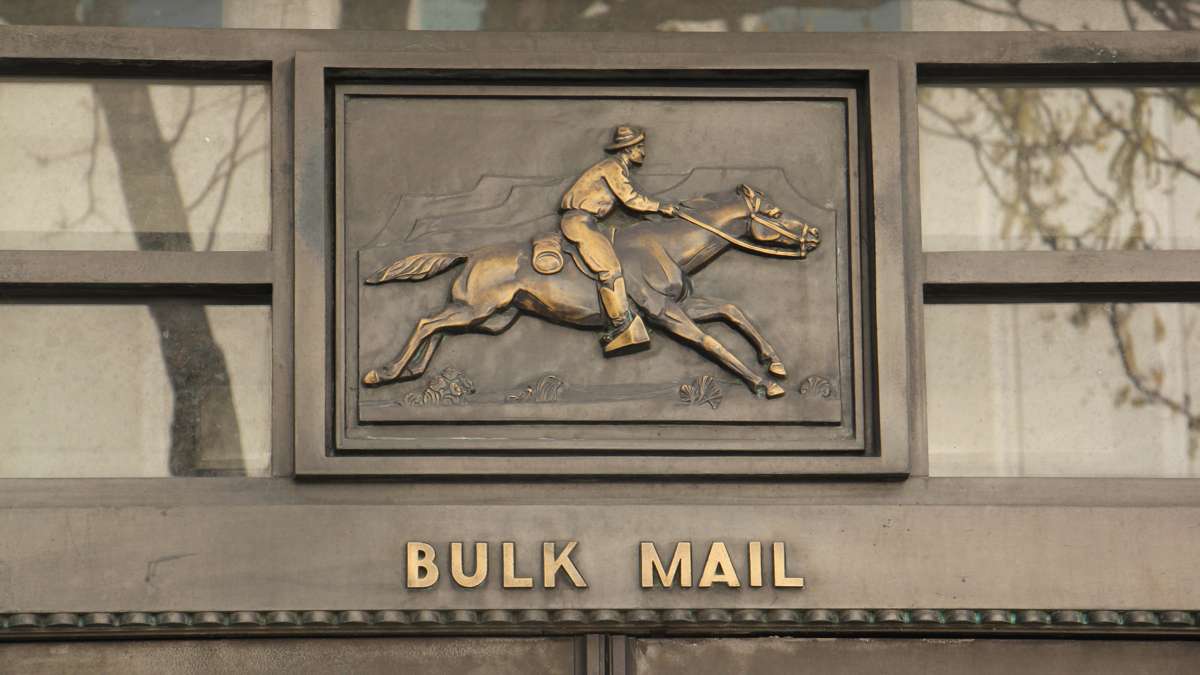Today would be the 100th birthday of the Penn Annex’s handsomest mailman — my dad
I’ll miss William Penn Annex. The Center City post office, stretching from Market to Chestnut along 9th Street, is closing — part of a nationwide downsizing by the United States Postal Service. My father John delivered mail out of that station for almost 40 years.
The post office occupies the first floor of the Robert Nix Federal Building, which opened in 1939. Architecturally, it’s a striking example of Art Deco’s simplified classicism, its exterior carvings depicting mail delivery in all climates.
Evolving with the nation
Postal customers enter a gleaming block-long corridor scaled to the pre-internet age, when 42 service windows greeted generations for whom handwritten, hand-delivered documents were the essential link to the outside world.
When the United States entered World War II, William Penn Annex became a hub for hundreds, maybe thousands, of patrons sending letters and packages to loved ones in the service. Now, however, employees and customers rattle around the huge facility, seeming as much a part of history as the carved-in-stone figures outside. When the annex closes, postal functions will move to smaller quarters in the Cast Iron Building on Arch Street.
From the late 1930s into the 1970s, Dad delivered mail along streets that had been around since the postal service was established in 1775 by Benjamin Franklin.
The founders knew that democracy depended on reliable communication. Though other modes have emerged over the centuries, people still consider physical mail essential: Witness the pushback to the suggestion of ending Saturday delivery. And because it predates the nation, postal service history parallels American history. For example, the earliest insignia on my father’s uniform featured of a Pony Express horse and rider, recalling the relay system that carried messages before telegraph lines connected east and west.
The people make the job worthwhile
Dad carried mostly business mail in a heavy leather satchel he wore on his left shoulder, a practice that would occasionally necessitate visiting a chiropractor. He made two deliveries a day.
People once looked forward to the mail: AOL didn’t choose its chirpy “You’ve got mail!” — itself a throwback — by accident. The mailman (then, most letter carriers were still men) was as reliable as a clock, familiar as a neighbor, and the only regular contact for some. Letter carriers were often the first to sense when something was off in a neighborhood, that someone needed help. Now, however, for more and more of us, receiving physical mail is a diminished experience: less important, more impersonal, less relied upon.
If you still rely on the mail, I hope you have a letter carrier like Dad, who enjoyed his job and treated it as more than a task to be completed.
My father never wanted to be a supervisor. He worked hard, but enjoyed the autonomy of serving mail. When the owner of a record store on the route invited Dad to hear a cut from a new LP, he could spare a minute. He enjoyed circulating in Jewelers’ Row, Society Hill, and the historic district. He liked meeting people on his route, such as the elderly woman who was about to go alone to her husband’s funeral. Dad called in for permission to go with her, and did.
Wearing the uniform
Snail mail was the only mail my father ever knew, and in those days, the Post Office wasn’t a punch line. “Going postal” had not yet become code for incensed insanity. Despite typically heavy volume, and a workday that started at 6 a.m., Dad liked the work and most of his coworkers — though, as he described them, a few sounded like Cliff Claven, the annoying uber-expert Boston postal carrier of TV’s Cheers.

As people and businesses on the route changed, he’d spend an evening carefully reprinting labels for the upright wooden boxes in which he “cased” mail. I never saw my father’s mail case, but I’m sure it was the most legible at William Penn Annex.
At the end of the day, Dad would emerge from the employee entrance on Market Street, looking as neat as when he’d arrived. Initially, carriers bought their own uniforms; later, they received an annual allowance.
Standards of appearance were high when Dad was working. Postal uniforms were to be clean, pressed, and included police-style hats and ties. Especially in Center City, carriers were inspected before going out on their routes, and those who didn’t measure up were sent home.
Once, when an ad agency needed a letter carrier for a photo shoot, my father was selected, which only confirmed my mother’s opinion that he was the handsomest mailman anywhere. I don’t remember what the advertisement was for, but I have the picture.
The handsomest letter carrier at William Penn Annex would have been 100 years old today, so perhaps it’s appropriate that his post office is closing. But Dad’s workplace was bigger than the building at 9th and Market. It extended up and down the streets he served and in and out of the buildings to which he delivered mail over all those years. Still, I’ll miss walking through the place where he started and ended each day.
WHYY is your source for fact-based, in-depth journalism and information. As a nonprofit organization, we rely on financial support from readers like you. Please give today.
















